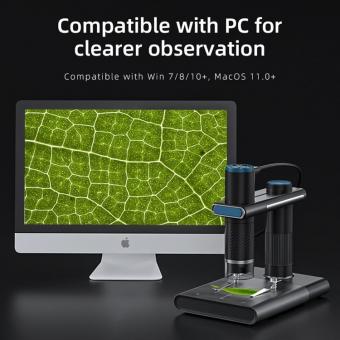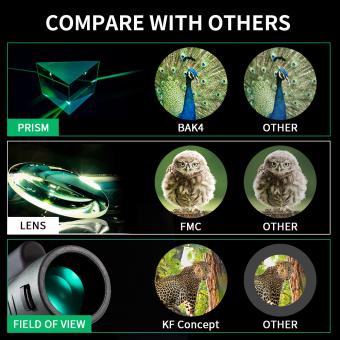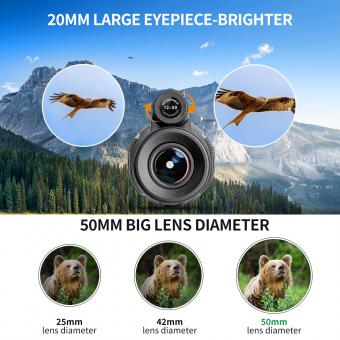What Is Monocular Double Vision ?
Monocular double vision, also known as monocular diplopia, is a condition where an individual sees two images of a single object with one eye. Unlike binocular double vision, which occurs when both eyes are open, monocular double vision persists even when the other eye is closed. This condition can be caused by various factors, including abnormalities in the cornea, lens, or retina of the affected eye. It can also be a symptom of certain eye conditions such as astigmatism, cataracts, or dry eye syndrome. Monocular double vision can significantly impact visual perception and may require medical intervention or corrective measures such as glasses, contact lenses, or surgery, depending on the underlying cause.
1、 Binocular Vision Impairment
Monocular double vision, also known as monocular diplopia, is a condition where an individual perceives two images of a single object with one eye. Unlike binocular double vision, which occurs when both eyes are open, monocular double vision persists even when the affected eye is closed. This condition can be caused by various factors, including abnormalities in the cornea, lens, or retina, as well as conditions such as cataracts, astigmatism, or dry eye syndrome.
Binocular vision impairment, on the other hand, refers to a condition where both eyes are unable to work together properly, resulting in difficulties with depth perception and coordination. This impairment can be caused by a range of factors, including strabismus (misalignment of the eyes), amblyopia (lazy eye), or certain neurological conditions.
It is important to note that monocular double vision and binocular vision impairment are distinct conditions. While monocular double vision affects only one eye, binocular vision impairment affects both eyes and their ability to work together effectively.
In recent years, there has been a growing understanding of the underlying causes and treatment options for both monocular double vision and binocular vision impairment. Advances in technology, such as specialized contact lenses and surgical interventions, have provided new avenues for managing these conditions. Additionally, vision therapy and rehabilitation programs have shown promising results in improving binocular vision and reducing symptoms associated with both monocular double vision and binocular vision impairment.
Overall, the latest point of view emphasizes the importance of early detection and appropriate treatment for individuals experiencing monocular double vision or binocular vision impairment. Consulting with an eye care professional is crucial in order to determine the underlying cause and develop an individualized treatment plan to address these conditions effectively.

2、 Diplopia Causes and Symptoms
Monocular double vision, also known as monocular diplopia, is a condition where an individual sees two images of a single object with one eye open, while the other eye remains closed. Unlike binocular double vision, which occurs when both eyes are open, monocular double vision is specific to one eye only.
Monocular double vision can be caused by various factors, including abnormalities in the cornea, lens, or retina of the affected eye. Conditions such as astigmatism, cataracts, corneal irregularities, and retinal disorders can all contribute to monocular diplopia. Additionally, certain eye diseases, such as keratoconus or macular degeneration, can also lead to this condition.
The symptoms of monocular double vision may vary depending on the underlying cause. Some individuals may experience a slight separation between the two images, while others may see a more pronounced double image. The double vision may be constant or intermittent, and it may worsen with certain eye movements or activities.
It is important to note that monocular double vision is different from binocular double vision, which is often a result of misalignment or weakness in the muscles that control eye movement. Binocular double vision typically disappears when one eye is closed, whereas monocular double vision persists even with one eye closed.
In recent years, advancements in diagnostic techniques and treatments have improved our understanding of monocular double vision. Ophthalmologists now have access to advanced imaging technologies that can help identify the precise cause of the condition. This allows for more targeted and effective treatment options, such as corrective lenses, surgery, or other interventions specific to the underlying cause.
If you experience monocular double vision, it is crucial to consult with an eye care professional for a comprehensive evaluation. They can determine the cause of your symptoms and recommend appropriate treatment options to alleviate or manage the condition.

3、 Monocular Diplopia vs. Binocular Diplopia
Monocular double vision, also known as monocular diplopia, is a condition where an individual sees two images of a single object with one eye only. Unlike binocular diplopia, which occurs when both eyes are open, monocular diplopia persists even when the affected eye is closed. This phenomenon is often a result of abnormalities in the eye itself, such as astigmatism, cataracts, or irregularities in the cornea.
Monocular diplopia can be a distressing experience for those affected, as it can significantly impact their visual perception and daily activities. However, it is important to note that monocular diplopia is relatively rare compared to binocular diplopia, which is more commonly associated with underlying neurological or muscular issues.
In recent years, there has been a growing understanding of the potential causes of monocular diplopia. Research suggests that certain eye conditions, such as dry eye syndrome, keratoconus, or even a poorly fitting contact lens, can contribute to the development of monocular double vision. Additionally, trauma or injury to the eye, such as a corneal abrasion or retinal detachment, can also lead to this condition.
It is crucial for individuals experiencing monocular diplopia to seek medical attention from an ophthalmologist or optometrist. These professionals can conduct a comprehensive eye examination to determine the underlying cause of the double vision and recommend appropriate treatment options. Treatment may involve correcting the underlying eye condition, prescribing corrective lenses, or in some cases, surgical intervention.
In conclusion, monocular diplopia is a condition where an individual sees two images of a single object with one eye. While it is relatively rare compared to binocular diplopia, it can still significantly impact an individual's visual perception. Seeking professional medical advice is essential for proper diagnosis and treatment.

4、 Ocular Misalignment and Double Vision
Monocular double vision, also known as monocular diplopia, is a condition where an individual perceives two images of a single object with one eye. Unlike binocular double vision, which occurs when both eyes are open, monocular double vision occurs when only one eye is open. This condition is often a result of ocular misalignment, where the eyes are not properly aligned and do not focus on the same point.
Ocular misalignment can be caused by various factors, including muscle weakness or paralysis, trauma to the eye or surrounding structures, certain eye diseases, or even refractive errors. When the eyes are not aligned, they send different visual signals to the brain, resulting in the perception of two images.
In recent years, there have been advancements in understanding and treating monocular double vision. One approach involves the use of prism glasses, which can help align the images seen by each eye and reduce the perception of double vision. Another option is vision therapy, which involves exercises and techniques to improve eye coordination and alignment.
It is important to note that monocular double vision can also be a symptom of underlying eye conditions, such as cataracts, corneal abnormalities, or retinal disorders. Therefore, it is crucial to consult an eye care professional for a comprehensive evaluation and appropriate treatment.
Overall, while monocular double vision can be a distressing condition, there are treatment options available to help manage and alleviate the symptoms. With advancements in understanding ocular misalignment and the development of new treatment approaches, individuals experiencing monocular double vision can find relief and improve their visual function.































There are no comments for this blog.